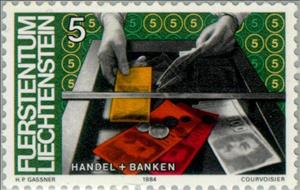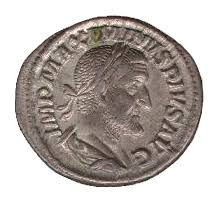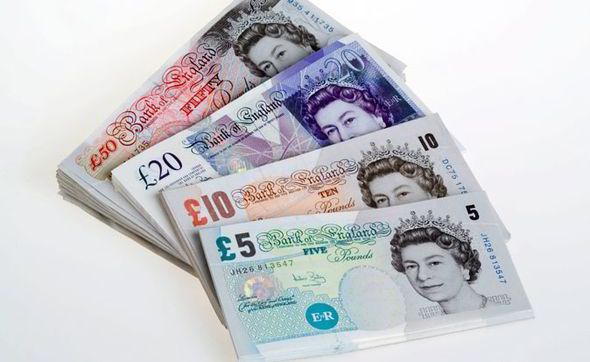Stamp: Occupations- Banking and trading (Liechtenstein 1984)
Occupations- Banking and trading (Liechtenstein 1984)
10 September (Liechtenstein ) within release Labour goes into circulation Stamp Occupations- Banking and trading face value 5 Swiss centime
| Stamp Occupations- Banking and trading in catalogues | |
|---|---|
| Michel: | Mi:LI 849 |
Stamp is horizontal format.
Also in the issue Labour:
- Stamp - Occupations- Catering face value 50;
- Stamp - Occupations- Carpentry face value 60;
- Stamp - Occupations- Public health face value 70;
- Stamp - Occupations- Industrial research face value 80;
- Stamp - Occupations- Masonry face value 100;
- Stamp - Occupations- Industrial management face value 120;
- Stamp - Occupations- Post and communications face value 150;
- Stamp - Occupations- Factory worker face value 20;
- Stamp - Occupations- Banking and trading face value 5;
- Stamp - Occupations- Construction, plumbing face value 10;
- Stamp - Occupations- Contracting, draftswoman face value 35;
Stamp Occupations- Banking and trading it reflects the thematic directions:
An economy is an area of the production, distribution and trade, as well as consumption of goods and services. In general, it is defined as a social domain that emphasize the practices, discourses, and material expressions associated with the production, use, and management of resources. A given economy is a set of processes that involves its culture, values, education, technological evolution, history, social organization, political structure, legal systems, and natural resources as main factors. These factors give context, content, and set the conditions and parameters in which an economy functions. In other words, the economic domain is a social domain of interrelated human practices and transactions that does not stand alone.
A coin is a small object, usually round and flat, used primarily as a medium of exchange or legal tender. They are standardized in weight, and produced in large quantities at a mint in order to facilitate trade. They are most often issued by a government. Coins often have images, numerals, or text on them. The faces of coins or medals are sometimes called the obverse and the reverse, referring to the front and back sides, respectively. The obverse of a coin is commonly called heads, because it often depicts the head of a prominent person, and the reverse is known as tails.
Numismatics is the study or collection of currency, including coins, tokens, paper money, medals and related objects.
A bank is a financial institution that accepts deposits from the public and creates a demand deposit while simultaneously making loans.Lending activities can be directly performed by the bank or indirectly through capital markets
A banknote—also called a bill (North American English), paper money, or simply a note—is a type of negotiable promissory note, made by a bank or other licensed authority, payable to the bearer on demand. Banknotes were originally issued by commercial banks, which were legally required to redeem the notes for legal tender (usually gold or silver coin) when presented to the chief cashier of the originating bank. These commercial banknotes only traded at face value in the market served by the issuing bank. Commercial banknotes have primarily been replaced by national banknotes issued by central banks or monetary authorities.





